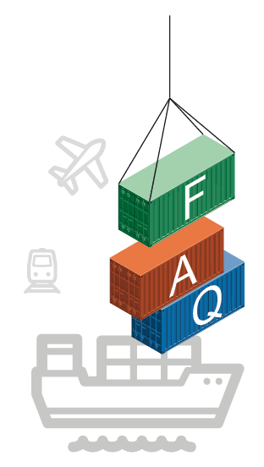How Integrated Transport Logistics Creates Real Growth
Nick Ostdick - September 05, 2017

 It sounds simple, but how well a manufacturing company moves products from the shop floor to the customer’s front door is not only a sign of a healthy supply chain, but also a critical indicator as to how efficiently planners and managers mitigate several aspects of global supply chain management. But in one of the more interesting paradoxes in today’s manufacturing landscape, integrated transport logistics, while extremely valuable, is one of the more overlooked elements of how manufacturing companies work their production cycles.
It sounds simple, but how well a manufacturing company moves products from the shop floor to the customer’s front door is not only a sign of a healthy supply chain, but also a critical indicator as to how efficiently planners and managers mitigate several aspects of global supply chain management. But in one of the more interesting paradoxes in today’s manufacturing landscape, integrated transport logistics, while extremely valuable, is one of the more overlooked elements of how manufacturing companies work their production cycles.
This oversight is attributable to a number of factors, though perhaps in large part due to how late in the production cycle transport logistics arrives, but also because transport logistics contains so many variable, shifting elements that make it hard for planners and managers to effectively govern logistical concerns. Whether we’re talking about fuel costs, route alterations, load variables, and breakdowns or maintenance in transport vessels such as chassis or rail, transport logistics is a critical driver in helping manufacturing manage costs and resources, but also in creating business moments or instances for cross-organizational growth.
But how? How can an integrated transport logistics platform actually help manufacturing create real growth and stimulate revenue generation or cost savings across the entire value chain? And, along the same lines, what other micro-benefits can transport logistics provide manufacturing companies on a global scale? With these questions in mind, let’s examine how integrated transport logistics creates real growth for companies in today’s modern manufacturing arena.
Managing operational costs and resources
As we just mentioned, transportation logistics are not a fixed element of supply chain management. Variances or changes in constraints are the name of the game and manufacturing companies must be able to adapt to these shifts so as not to incur breakdowns or bottlenecks in planning and production. As such, those companies that can gather, sort, analyze, and review previous transportation data are better equipped to explore areas where costs can be reduced and optimized for more effective future transport planning. A transport logistics solution gives planners and managers the power to uncover areas of waste in their transportation strategy (container levels, fuel consumption, inaccurate routing processes, ineffective distribution and warehousing networks, and long lead times between warehousing and delivery) to deploy more lean methods of transportation and avoid bottlenecks or breakdowns in the transit stage of their value chain.
Incorporating Industry 4.0
We’ve discussed at length on this blog about the importance of incorporating Industry 4.0 principles into a larger planning and production platform, and transport logistics are no different. Because Industry 4.0 relies heavily on intelligent solutions communicating data, reporting, and notifications in real-time, Industry 4.0 is perhaps a perfect fit for transport logistics in terms of identifying changing variables in transportation constraints and addressing these variables before they result in breakdowns or bottlenecks. In addition, because transport logistics is often reliant on a large network of partners, stages, or processes, integrating Industry 4.0 into a transport strategy is a seamless way of connecting these disparate points into a cohesive system or architecture whereby all the important players can communicate, collaborate, and respond to transport logistics events with little or no lead time. No longer are manufacturing companies operating their transport logistics strategy on outdated data or irrelevant communication threads. Today, Industry 4.0 allows these functions to take place in the moment between as many players as necessary.
Responding to operational or production shifts
Let’s take a hypothetical example of a certain production program scheduled to produce a certain amount of units that need to be transported to a certain distribution facility by a certain date. However, unforeseen changes to said production program means a significant reduction in the number of units, which directly impacts transport capacity. Where before a manufacturing company had budgeted enough space to move a certain number of units, this reduction either means a longer lead time to when a full truck/container can be shipped, or an inefficient use of capacity whereby a half or less than half truck or container is utilized. However, a transport logistics strategy and solution gives planners and managers the power to adapt to these operational shifts by identifying the best routes, transport modes, and delivery windows to avoid incurring losses in resources and time in addressing these changing variables. In addition, a transport logistics solution allows manufacturing companies to engage in simulations and what-if scenarios to plan accordingly for such events and craft comprehensive fail-safe plans to avoid bottlenecks stemming from operational shifts.
Enhancing customer service and relations
The value of a transport logistics solution in enhancing customer satisfaction and service cannot be overstated. While the value proposition internally for manufacturing companies should now be quite apparent, the value externally or in a customer-facing avenue should be easily visible from the start. A company’s ability to provide the right product at the right time in the right place is paramount in driving a positive customer relations platform and increasing a company’s client base and footprint. Because a transport logistics solution provides planners and managers the power to ensure the right products arrive in the right condition at the right moment, customers will not only be more apt to work with a given manufacturing company in the future, but said manufacturing company will also create more stable and productive business relationships with partners in their supply networks.
LATEST POSTS
- Understand Circular Economy in The Manufacturing Industry
- How Can Industry 4.0 IT Integration Be Achieved Smoothly?
- The Significance of Order Sequencing in Discrete Manufacturing
- How to improve your Supply Chain Management: The Power of Control Towers
- Optimizing Human Resource Scheduling in Manufacturing: A Technological Approach



